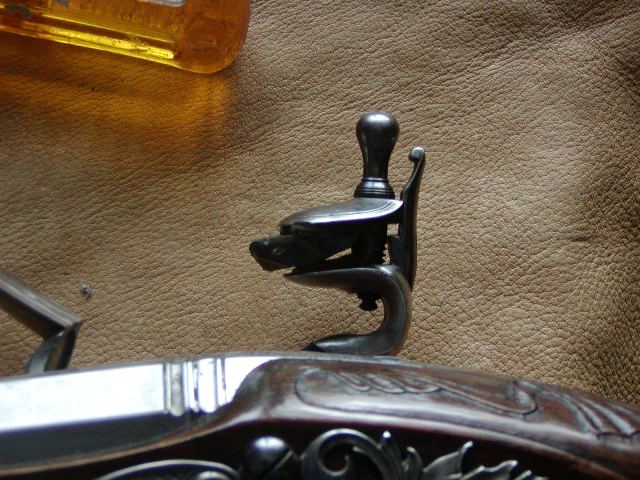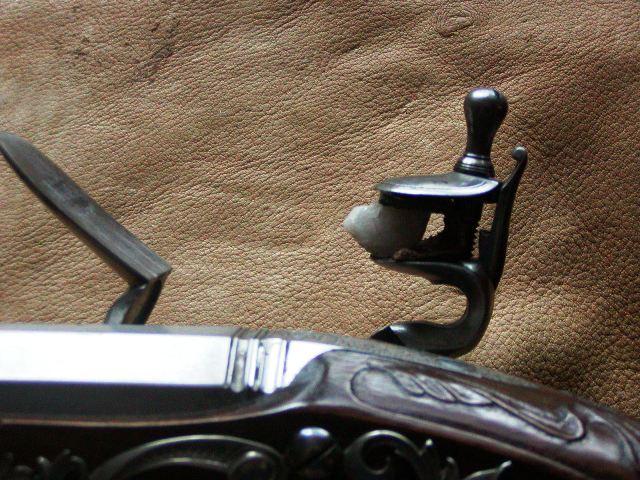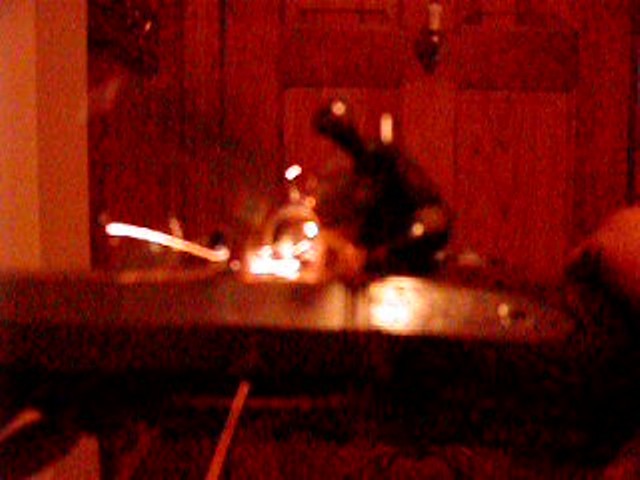- Joined
- Jul 5, 2012
- Messages
- 2,263
- Reaction score
- 3,625
Not something I do on all locks but when tuneing and tweaking locks should some desire a reliable lock this is how it goes:
Install clean ready lock in vise and prime

Fire the lock igniting the powder. and reprime without cleaning and attempt to fire again. To pass the test is 20 test firings without cleaning or removing any residue. 20 shots must be fired with 90% or better reliability to pass. The lowest passing score is 20/22. If you must reprime automatic fail, knapp flint automatic fail, clean automatic fail. After 20 shots the flint can be chipping the residue builds up and with no barrel charge you don't get that blast to clear either making this a more brutal test than just 20 shots.
After 20 firings the lock appears quite dirty but with a perfect score 20/20 I will decide to see how much farther it will go before a misfire.


Continuing on with the lock in a mess like this another 14 ignitions went perfect misfiting on the 35th. Closing the frizzen and reattempting on 35 without repriming she fired. All in all a very successful brutal test. Some final pictures after the test.



Install clean ready lock in vise and prime

Fire the lock igniting the powder. and reprime without cleaning and attempt to fire again. To pass the test is 20 test firings without cleaning or removing any residue. 20 shots must be fired with 90% or better reliability to pass. The lowest passing score is 20/22. If you must reprime automatic fail, knapp flint automatic fail, clean automatic fail. After 20 shots the flint can be chipping the residue builds up and with no barrel charge you don't get that blast to clear either making this a more brutal test than just 20 shots.
After 20 firings the lock appears quite dirty but with a perfect score 20/20 I will decide to see how much farther it will go before a misfire.


Continuing on with the lock in a mess like this another 14 ignitions went perfect misfiting on the 35th. Closing the frizzen and reattempting on 35 without repriming she fired. All in all a very successful brutal test. Some final pictures after the test.











